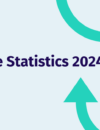
When you think of age bias, you might be forgiven for focusing on the discrimination of older generations in the workplace. It’s certainly a huge issue, but there’s evidence that the youngest members of your team might be subjected to equal – if not, greater – amounts of prejudice because of their age.
The Equalities Act of 2010 ensures all age groups and generations are protected against discrimination. But that doesn’t mean it still isn’t a problem, and it’s rife among those newest to the world of work. In fact, according to a survey by Ten Spot last year, 86% of Generation Z workers – the youngest working generation, born between 1997 and 2012 – report having experienced some form of discrimination or bullying in the workplace.
Where does this bias come from? Sheila Callaham wrote about this concisely for Forbes earlier this year: “Age bias against younger workers is often overlooked because of the pervasive belief that some element of experience is required to warrant respect, status and resources and that time will eventually bring them what they want. But equating age with immaturity and inexperience is an example of age bias.”
While older colleagues might be tarnished with unfair assumptions of being ‘behind’ or ‘slow’, younger teammates might be seen as immature, inexperienced or naive. These are both dangerous judgments to make; a person’s age does not determine their capability to succeed at work, and while it’s arguable that younger colleagues may not have the life experience of their older peers, they have other strings in their bow that enable them to flourish.
This is a generation with drive, too. Around a third of Generation Z are even considering launching their own business, proving that they are in no way lacking in their capacity to work hard, banishing further, unfortunately common, assumptions of being lazy or entitled.
There’s no denying that there is an element of rivalry between generations, which can be intensified in the office. Dr Michael North at New York University Stern School of Business, is quoted in Forbes: “It doesn’t help when we talk about Boomers versus Millennials […] Framing generations in direct competition with one another exacerbates tensions. Minimising these tensions is critical for healthy ageing in an increasingly intergenerational workplace.”
Indeed, there are more generations than ever before working now – five different age groups could potentially be found in the workplace at the same time, and with each generation responding better to different challenges, objectives and methods of communication, with different priorities, that’s a huge challenge for employers.
It’s more important now than ever to ensure all generations are included and equally respected within your team – from the oldest to the youngest. But how can you do this effectively?
Eliminate any negativity between generations as soon as it rears its head. If you notice that assumptions or stereotypes slip into conversations between colleagues, however casually, nip it in the bud. This goes without saying, obviously, but it’s easy to dismiss comments as jokes. Age bias and discrimination can impact peoples’ careers – especially those only just beginning their journey.
Embrace the differences. While some generations may prefer face-to-face meetings, others may opt to communicate via direct messages or email. Encourage a middle ground, or at least an understanding that people should consider each individual’s preferences – without dismissing them or fighting against them. Flexibility is key – and these differences are likely to evolve into strengths.
Harness the benefits of multigenerational teams. Having so many different people working together means you can all benefit from different sources of knowledge, skills, outlooks and ideas. Encourage people to work across age groups, and to learn from each other. Frame any gaps or difficulties, such as digital literacy or experience, as opportunities instead, and foster a collaborative culture, packed with mentoring, upskilling and connection. It’s all about creating mutual respect and working with each other, not against.
You may not be concerned about bridging these generational gaps if your team are all similar in age; but have you thought about changing that? New ideas, new approaches, new priorities; Generation Z offer so much to the workplace, and while introducing differences to your team may be intimidating, they are the future of our working world and can be key for giving your organisation the edge.
So how can you recruit more Generation Z colleagues? Perhaps start by understanding that their preferences are different, avoid luring them in with gimmicks, and listen to what their priorities are. Furthermore, explore the obstacles their age groups may be experiencing and break down those barriers. For example, consider their concerns surrounding sustainability, or how and why they use technology. Deloitte expands on this: “To attract Gen Z, employers must be ready to adopt a speed of evolution that matches the external environment. That means developing robust training and leadership programs, with a real and tangible focus on diversity.”
Recent graduates, in particular, may have missed opportunities due to Covid-19 – so work with them to fill any gaps, and give them space to thrive. Ensure you are giving them meaningful reasons to join your team; beanbags and beer o’clock just won’t cut it anymore. We’re talking about flexible working, diversity, sustainable strategies and mental health support.
We’re merely skimming the surface when it comes to the youngest working generation – but it’s clear that cultivating a multigenerational workplace is a sure-fire way to benefit from all the strengths each age group has to offer, and Generation Z is certainly one to watch.
At Druthers, it’s our mission and our passion to empower organisations to find the best person to make an impact on their work, from a diverse shortlist of remarkable talent. Get in touch with us to find out how your business can make a positive change to your hiring and retention processes.





